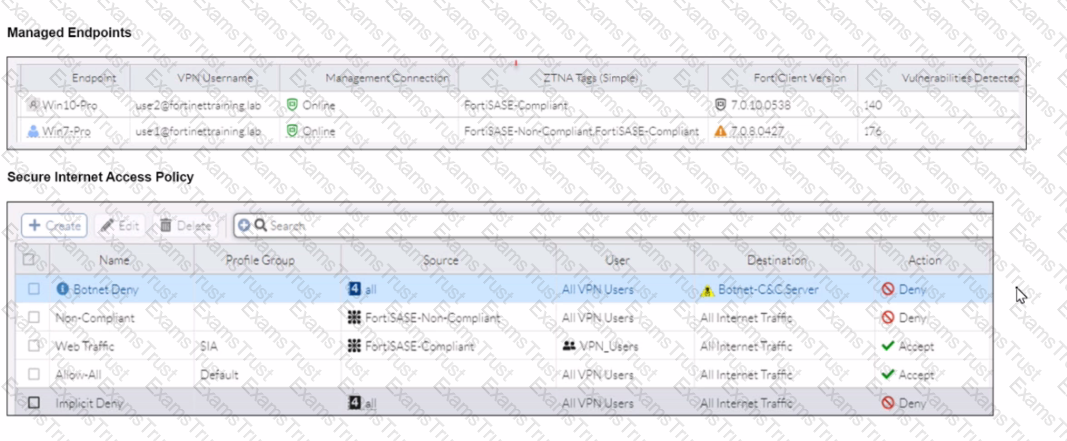Which two components are part of onboarding a secure web gateway (SWG) endpoint? (Choose two)
What are two advantages of using zero-trust tags? (Choose two.)
A FortiSASE administrator is configuring a Secure Private Access (SPA) solution to share endpoint information with a corporate FortiGate.
Which three configuration actions will achieve this solution? (Choose three.)
Which role does FortiSASE play in supporting zero trust network access (ZTNA) principles9
When deploying FortiSASE agent-based clients, which three features are available compared to an agentless solution? (Choose three.)
Which two deployment methods are used to connect a FortiExtender as a FortiSASE LAN extension? (Choose two.)
Refer to the exhibits.

WiMO-Pro and Win7-Pro are endpoints from the same remote location. WiMO-Pro can access the internet though FortiSASE, while Wm7-Pro can no longer access the internet
Given the exhibits, which reason explains the outage on Wm7-Pro?
During FortiSASE provisioning, how many security points of presence (POPs) need to be configured by the FortiSASE administrator?
Which secure internet access (SIA) use case minimizes individual workstation or device setup, because you do not needto install FortiClient on endpoints or configure explicit web proxy settings on web browser-based end points?